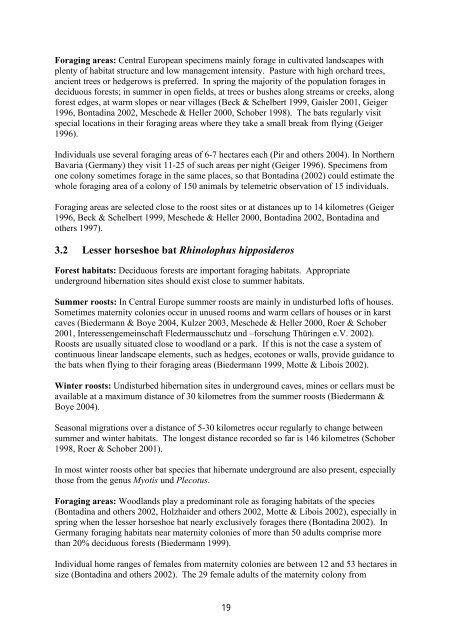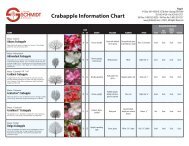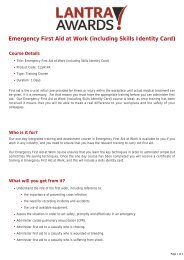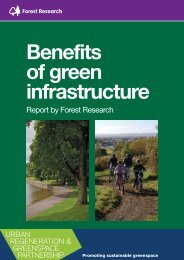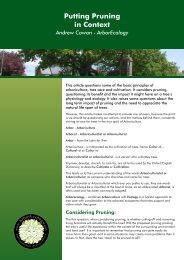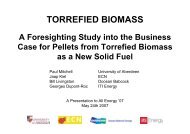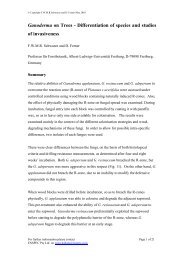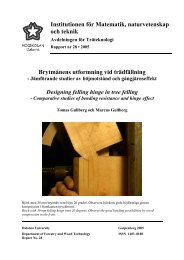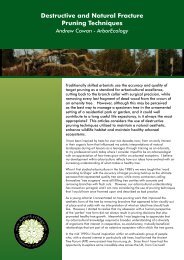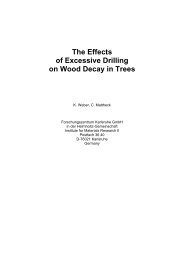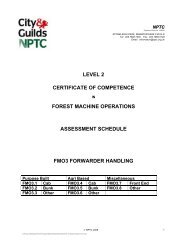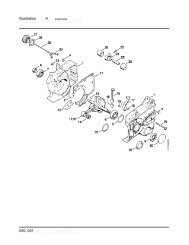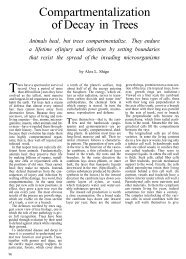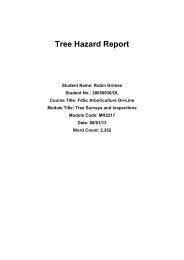working today for nature tomorrow - Justus-Liebig-Universität GieÃen
working today for nature tomorrow - Justus-Liebig-Universität GieÃen
working today for nature tomorrow - Justus-Liebig-Universität GieÃen
- No tags were found...
You also want an ePaper? Increase the reach of your titles
YUMPU automatically turns print PDFs into web optimized ePapers that Google loves.
Foraging areas: Central European specimens mainly <strong>for</strong>age in cultivated landscapes withplenty of habitat structure and low management intensity. Pasture with high orchard trees,ancient trees or hedgerows is preferred. In spring the majority of the population <strong>for</strong>ages indeciduous <strong>for</strong>ests; in summer in open fields, at trees or bushes along streams or creeks, along<strong>for</strong>est edges, at warm slopes or near villages (Beck & Schelbert 1999, Gaisler 2001, Geiger1996, Bontadina 2002, Meschede & Heller 2000, Schober 1998). The bats regularly visitspecial locations in their <strong>for</strong>aging areas where they take a small break from flying (Geiger1996).Individuals use several <strong>for</strong>aging areas of 6-7 hectares each (Pir and others 2004). In NorthernBavaria (Germany) they visit 11-25 of such areas per night (Geiger 1996). Specimens fromone colony sometimes <strong>for</strong>age in the same places, so that Bontadina (2002) could estimate thewhole <strong>for</strong>aging area of a colony of 150 animals by telemetric observation of 15 individuals.Foraging areas are selected close to the roost sites or at distances up to 14 kilometres (Geiger1996, Beck & Schelbert 1999, Meschede & Heller 2000, Bontadina 2002, Bontadina andothers 1997).3.2 Lesser horseshoe bat Rhinolophus hipposiderosForest habitats: Deciduous <strong>for</strong>ests are important <strong>for</strong>aging habitats. Appropriateunderground hibernation sites should exist close to summer habitats.Summer roosts: In Central Europe summer roosts are mainly in undisturbed lofts of houses.Sometimes maternity colonies occur in unused rooms and warm cellars of houses or in karstcaves (Biedermann & Boye 2004, Kulzer 2003, Meschede & Heller 2000, Roer & Schober2001, Interessengemeinschaft Fledermausschutz und –<strong>for</strong>schung Thüringen e.V. 2002).Roosts are usually situated close to woodland or a park. If this is not the case a system ofcontinuous linear landscape elements, such as hedges, ecotones or walls, provide guidance tothe bats when flying to their <strong>for</strong>aging areas (Biedermann 1999, Motte & Libois 2002).Winter roosts: Undisturbed hibernation sites in underground caves, mines or cellars must beavailable at a maximum distance of 30 kilometres from the summer roosts (Biedermann &Boye 2004).Seasonal migrations over a distance of 5-30 kilometres occur regularly to change betweensummer and winter habitats. The longest distance recorded so far is 146 kilometres (Schober1998, Roer & Schober 2001).In most winter roosts other bat species that hibernate underground are also present, especiallythose from the genus Myotis und Plecotus.Foraging areas: Woodlands play a predominant role as <strong>for</strong>aging habitats of the species(Bontadina and others 2002, Holzhaider and others 2002, Motte & Libois 2002), especially inspring when the lesser horseshoe bat nearly exclusively <strong>for</strong>ages there (Bontadina 2002). InGermany <strong>for</strong>aging habitats near maternity colonies of more than 50 adults comprise morethan 20% deciduous <strong>for</strong>ests (Biedermann 1999).Individual home ranges of females from maternity colonies are between 12 and 53 hectares insize (Bontadina and others 2002). The 29 female adults of the maternity colony from19


